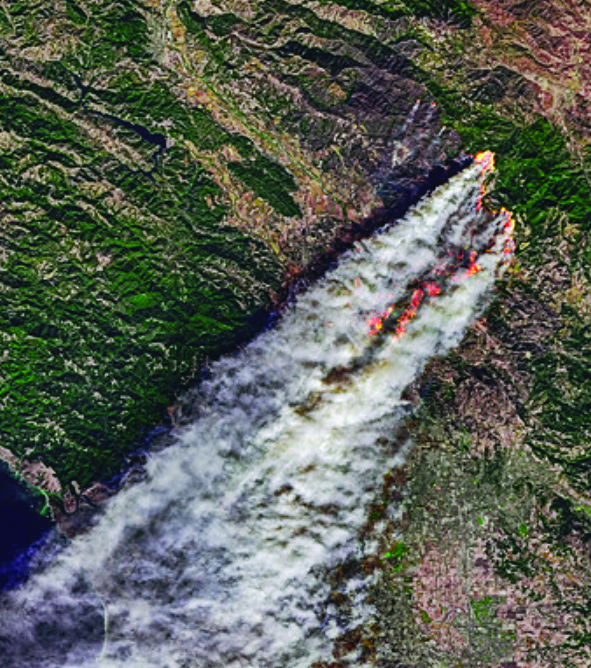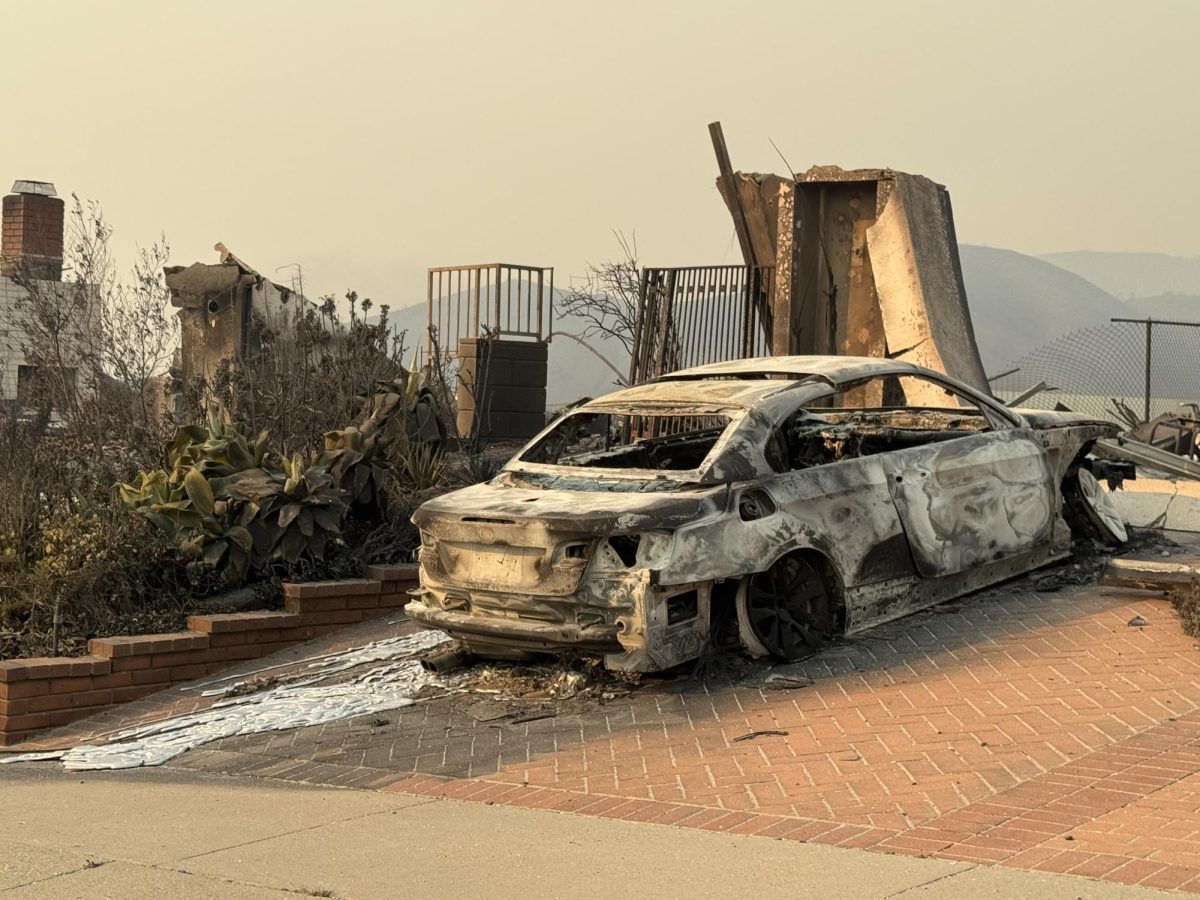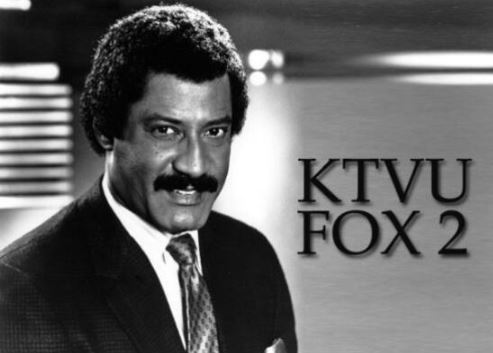This year, California has seen more than 6,000 wildfires spark all throughout the state.
Almost 200,000 acres of the Golden State have burned. In the last month, three major wild fires have started and have consequently prompted the evacuation of more than 200,000 people, massive Public Safety Power Shutoffs (PSPS) by PG&E, and the declaration of an Extreme Red Flag Warning by the National Weather Service because of extremely dangerous conditions for the start of a new fire.
The Bay Area was in between the four fires that were burning hundreds of acres every day. Out of the four wild fires, three were in Southern California, and one was only an hour away from San Francisco.
First, the biggest fire out of the three, the Kincade Fire, relentlessly burned more than 77,000 acres in Sonoma County, which is twice the size of the city of Miami. The re started on Oct. 23 during a strong wind event, but the actual cause of the restill hasn’t been determined.
On Nov. 6, the re was officially 100 percent contained. The fire was so destructive and massive that smoke made its way into SanFrancisco and into the Ingleside District, consequently impacting Riordan.
“On a scale of one to 10, I rank the air quality that day a 6,” said Lucas Chow ’23. He continued saying, “To be honest, I thought the air quality that day was extremely bad because of the smokey smell. But when I checked the air quality online, it said it was moderate.”
Some students, like Chow, were seen wearing masks to protect them from inhaling smoke. Tothis, Lucas said, “Well, I have a mild allergy to smoke so because of this, my parents told me to wear the mask.”
The family of English teacher Michael-Vezzali Pascual ’88 was also affected because of the Kincade Fire. Vezzali-Pascual’s dad, a Riordan grad, Class of ’61 was affected by the fires.
He said, “My father’s house was a couple of miles away from the re line. I found out the proximity of my dad’s house to the refiling using Google Maps.”
He added, “Luckily, the house itself didn’t burn down, only the power was turned off since my father lives in northeast Windsor. I am grateful that many fire fighters stepped in to protect the community so the houses wouldn’t burn down.”
Vezzali-Pascual continued, “I was grateful nothing severe happened and that the only thing that was needed to be done was to throw some food away from the refrigerator.”
Farther down to the south, there were three fires that were consuming parts of Southern California. One was the Getty Fire, the other was the Easy Fire, and the most recent of the four fires was the Maria Fire.
The Getty Fire burned almost 800 acres in Brentwood, Los Angeles. This fire has been named the Getty Fire for its close proximity to the Getty Center, an art museum that opened in 1997. It was sparked on Oct. 28 and on Nov. 6, it was completely contained.
The Easy Fire consumed almost 2,000 acres in Simi Valley, which is in Ventura County. It was called the Easy Fire because it ignited on Oct. 30 near Easy Street and Madera Road.
Like the Getty Fire, the Easy Fire was burning in close proximity to another famous Southern California landmark, the Ronald Reagan Presidential Library. The library was almost completely surrounded by the fire and from where Ronald Reagan’s Air Force is on display at the library, out the window, one could see the blaze burning just a few meters away.
A herd of goats created a fire break months ago by eating vegetation that would have fueled the fire. It was completely contained on Nov. 2. The reignited near a Southern California Edison transmission line that was still active despite the PSPS due to the high winds in the region. Finally, the Maria Fire burned almost 10,000 acres and 100 percent contained on Nov. 5. The fire started on Halloween night in Somis, about an hour drive from Los Angeles.
The fire exploded rapidly because of strong Santa Ana winds during the time of the fire’s ignition. Vegetation from a wet winter quickly dried out because of hurricane-force wind gusts and low humidity.
This “fuel” for fires has been growing under aging electrical lines that can spark res in a few seconds. Houses on hillsides and the increase in cars have also contributed to these three fires.
Vezzali-Pascual said, “It is scary what California is facing. I feel that it’s going to get worse and that we should start taking care of our wonderful state.”








